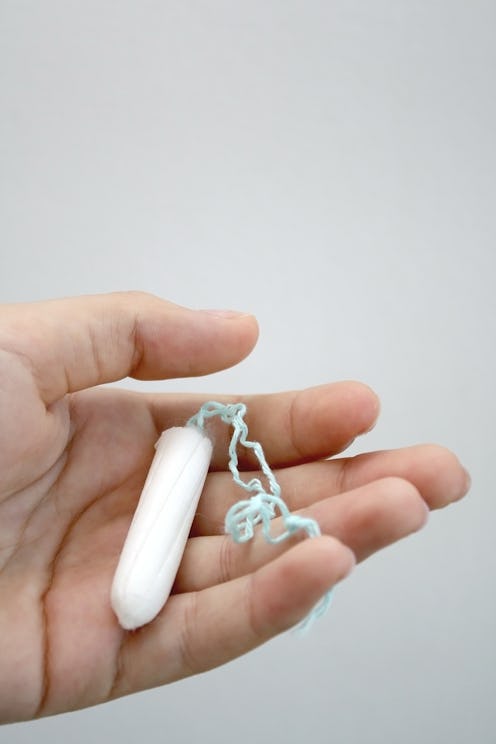Life
Here's Everything You Need To Know About Switching To Applicator-Free Tampons
When choosing the period product you use during your time of the month, you may consider a lot of different factors — including comfort, sustainability, cost, and how long the product lasts without leakage. Because they're easy to use (for most people), hygienic, and discreet, it’s no wonder that nearly 70 percent of people prefer tampons during their periods, according to HuffPost. Unfortunately, tampons — which are often bought wrapped in plastic, with plastic applicators — have a bad reputation of being one of the worst period products for the earth. While there are more sustainable menstrual hygiene options, like menstrual cups, many people don’t want to make the switch to a new product once they're familiar with one. But, if you want to stick to tampons, you can still be environmentally-friendly by using applicator-free tampons.
“By going applicator free, you’re able to decrease your carbon footprint because you’re using products with less material,” Molly Hayward, founder of the organic menstrual product company Cora, tells Bustle. “Applicators are often made out of plastic, and while they’re only the size of a tampon, using them over your lifespan adds up in the same way that using plastic water bottles adds up and has a detrimental environmental impact.”
According to statistics provided to Bustle by Cora, menstruating people can go through nearly 16,000 tampons in their lifetime — creating around one hundred pounds of garbage just from plastic applicators alone. And the book Flow: The Cultural History of Menstruation estimated people throw away up to 300 pounds of period-related garbage (think applicators and wrappers) in their lifetime, Slate reported. Since plastic can take decades, or even hundreds of years to decompose, there's a chance those plastic applicators and wrappers will long outlive any of us who use them. Tampon applicators even pose a threat to marine life, due to pollution, and marine animals digesting the plastic period product.
Some people find using an applicator is still more comfortable or easier than inserting an applicator-free tampon, and that's totally okay. If you still are concerned about being eco-friendly, switching to an applicator made from degradable material like cardboard, or to a reusable applicator ( like this one from DAME) can be an easy way to reduce your menstrual footprint while sticking with a routine that works for you.
Switching to applicator-free tampons may seem intimidating, but they are actually just as simple to use as regular tampons. “I think that some women are intimidated by applicator free tampons because they think that they’re difficult to use, but they’re actually really simple to insert, and very similar to using an applicator — except you’re able to have a bit more control since you’re using your fingers to place it in the most comfortable spot for you,” says Hayward.
Basically, to insert an applicator-free tampon, always start by making sure your hands are clean, and that you are relaxed. Then, while holding the tampon at the base, gently push it inside of your vagina. After that, use your finger to push the tampon into a comfortable position, and readjust if necessary. Simple as that! How do you know if you have inserted your applicator-free tampon in correctly? Hayward explains, “If you can’t feel anything and all you can see is the string, you’ve successfully inserted the tampon. Just be sure to wash your hands before inserting the tampon and relax.” While directions for inserting a tampon sans applicator are pretty straightforward, Hayward says it may take a couple attempts to get it positioned right. “Don’t feel discouraged if your first attempt isn’t successful, sometimes it takes a few tries to get used to a new product,” she adds.
Switching to applicator-free tampons is a great way to help the environment, and to make your period a little more green. Of course, your comfort during your period should be the most important factor in deciding what menstrual product to use. But, with a little practice and patience, applicator-free tampons could become your preferred product.
